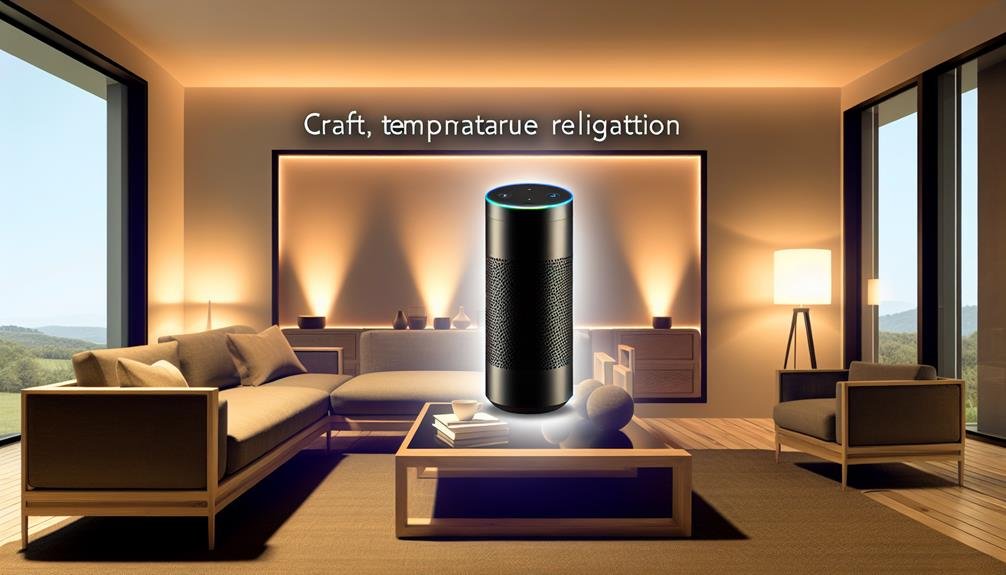Welcome to the world of smart home automation, where convenience and control converge! From effortlessly adjusting your thermostat to securing your home with just a tap on your smartphone, the possibilities are endless.
But where do you begin? How do you navigate through the sea of devices and technologies? Fear not, for this ultimate guide will be your beacon of light. Whether you're a tech-savvy enthusiast or a curious beginner, we'll walk you through the ins and outs of smart home automation, helping you unlock the true potential of your living space.
So, sit back, relax, and prepare to embark on a journey that will transform the way you interact with your home.
Key Takeaways
- Smart home automation offers increased convenience and control over household devices and systems.
- Integrating smart devices with energy management systems can lead to improved energy efficiency and reduced utility bills.
- When choosing smart home devices, consider compatibility with your smart home system, ease of installation, features, and budget.
- Setting up a smart hub is crucial for communication and internet access in your smart home system, and patience and persistence are key during the setup process.
Understanding Smart Home Automation
If you're looking to make your home more efficient and convenient, understanding smart home automation is essential.
Smart home automation refers to the use of technology to automate and control various household devices and systems.
One of the main benefits of smart home automation is increased convenience. With voice control integration, you can easily control your smart devices using simple voice commands. Imagine being able to turn off the lights, adjust the temperature, or even lock your doors, all without having to lift a finger. This level of control and convenience can greatly simplify your daily routine and save you time and effort.
Additionally, smart home automation can also lead to increased energy efficiency. By integrating smart devices with energy management systems, you can optimize energy usage and reduce your utility bills. For example, you can set your thermostat to adjust automatically based on occupancy or use smart power strips to eliminate standby power consumption.
Choosing the Right Devices
To choose the right devices for your smart home automation, consider your specific needs and preferences. When selecting smart home devices, it's essential to ensure they are compatible with your existing smart home system. Before making any purchases, check the compatibility of the devices with the smart home hub or platform you are using. This will ensure that the devices can seamlessly integrate with your current setup and be controlled through a single interface.
To help you make an informed decision, here are some factors to consider when choosing smart home devices:
| Factor | Description |
|---|---|
| Compatibility | Check if the device is compatible with your smart home system. |
| Installation | Consider the ease of installation and whether it requires professional assistance. |
| Functionality | Evaluate the features and capabilities of the device to meet your specific needs. |
| Price | Determine your budget and find devices that offer the best value for money. |
| Brand reputation | Research the reputation of the manufacturer and read reviews from other users. |
| User-friendly interface | Look for devices with intuitive interfaces and easy-to-use controls. |
Setting Up a Smart Hub
Now that you have chosen the right devices for your smart home automation, it's time to set up a smart hub to centralize control and communication between all your devices. A smart hub acts as the brain of your smart home system, allowing you to connect and control various devices from a single platform.
To set up your smart hub, begin by connecting it to your home Wi-Fi network. This step is crucial as it enables your hub to communicate with other devices and access the internet for software updates and additional functionalities. Once connected, you can proceed to add your devices to the hub. Most smart hubs support a wide range of devices, including smart lights, smart thermostats, and security cameras. Follow the specific instructions provided by the manufacturer to connect each device to your hub.
In case you encounter any issues during the setup process, don't panic. Troubleshooting issues is a common part of the setup process, and most smart hubs offer troubleshooting guides or customer support to assist you. Make sure to check the hub's documentation or online resources for troubleshooting tips. Remember, patience and persistence are key when it comes to setting up your smart hub.
Customizing Automation Routines
Customizing automation routines allows you to personalize and optimize the functionality of your smart home system. With the ability to create personalized schedules and integrate voice control, you have the freedom to tailor your smart home experience to your specific needs and preferences.
Here are three key benefits of customizing automation routines:
- Personalized schedules: By creating personalized schedules for your smart devices, you can automate daily tasks and routines to fit your lifestyle. For example, you can set your lights to turn on and off at specific times, adjust the thermostat temperature based on your preferences throughout the day, and even schedule your coffee maker to start brewing when you wake up.
- Enhanced convenience: Integrating voice control into your automation routines adds an extra level of convenience. With voice commands, you can control your smart home devices effortlessly, using only your voice. Whether it's dimming the lights, adjusting the volume on your entertainment system, or turning on the sprinklers, voice control allows you to interact with your smart home in a hands-free and hassle-free manner.
- Increased efficiency: Customizing automation routines can also help you optimize energy usage and increase efficiency. For example, you can set your smart thermostat to adjust the temperature when you're away from home, saving energy and reducing utility costs. You can also automate the process of turning off lights and electronics when they're not in use, helping to conserve energy and reduce your carbon footprint.
Enhancing Home Security With Automation
As you further explore the capabilities of smart home automation, one area that deserves attention is enhancing home security through automation.
By integrating smart locks into your home security system, you can enjoy enhanced protection and convenience. Smart locks allow you to lock and unlock your doors remotely using your smartphone or voice commands. You can also create unique access codes for family members, friends, or service providers, granting them temporary or permanent access to your home. This eliminates the need for physical keys and provides you with greater control over who enters your property.
Utilizing surveillance cameras for remote monitoring is another effective way to enhance your home security. With smart home automation, you can access live video feeds from your cameras through your smartphone or computer. This allows you to keep an eye on your home from anywhere, providing peace of mind and the ability to respond quickly to any suspicious activity. Some surveillance cameras also offer advanced features like motion detection and alerts, enabling you to receive notifications when there's movement detected in specific areas of your property.





